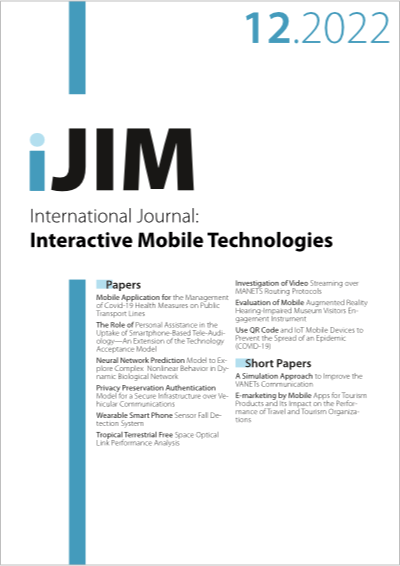Evaluation of Mobile Augmented Reality Hearing-Impaired Museum Visitors Engagement Instrument
DOI:
https://doi.org/10.3991/ijim.v16i12.30513Keywords:
Mobile Augmented Reality, Hearing-Impaired, Museum Visitors, EngagementAbstract
Mobile Augmented Reality has come a long way since its inception as a multimedia system during the last few decades. From the concept of an Augmented Reality experience to actual smartphone applications, it has come a long way. Researchers have chosen to leverage the concept of engagement in the construction of Mobile Augmented Reality applications in order to boost museum visitors' engagement and provide a more effective learning environment. The majority of Mobile Augmented Reality applications, on the other hand, were designed with normal hearing visitors in mind, while hearing-impaired visitors are given less attention. Those with hearing difficulties have an unfavourable experience as a result of this, and are unsatisfied with their visit. The elements of Mobile Augmented Reality aimed at engaging hearing-impaired museum visitors are determined in this study. The next step was to construct a conceptual model, which was then validated through an expert review. In investigating any flaws of the instrument among hearing-impaired museum visitors, a pilot study was conducted to improve the items and determine their level of reliability. Participants in the study were hearing-impaired who visited one of Iraq's ancient museums. This study will focus on evaluating the prototype to see how effective it is at engaging hearing-impaired museum visitors in the near future.
Downloads
Published
How to Cite
Issue
Section
License
Copyright (c) 2022 Esraa Jaffar Baker, Juliana Aida Abu Bakar, Abdul Nasir Zulkifli

This work is licensed under a Creative Commons Attribution 4.0 International License.



